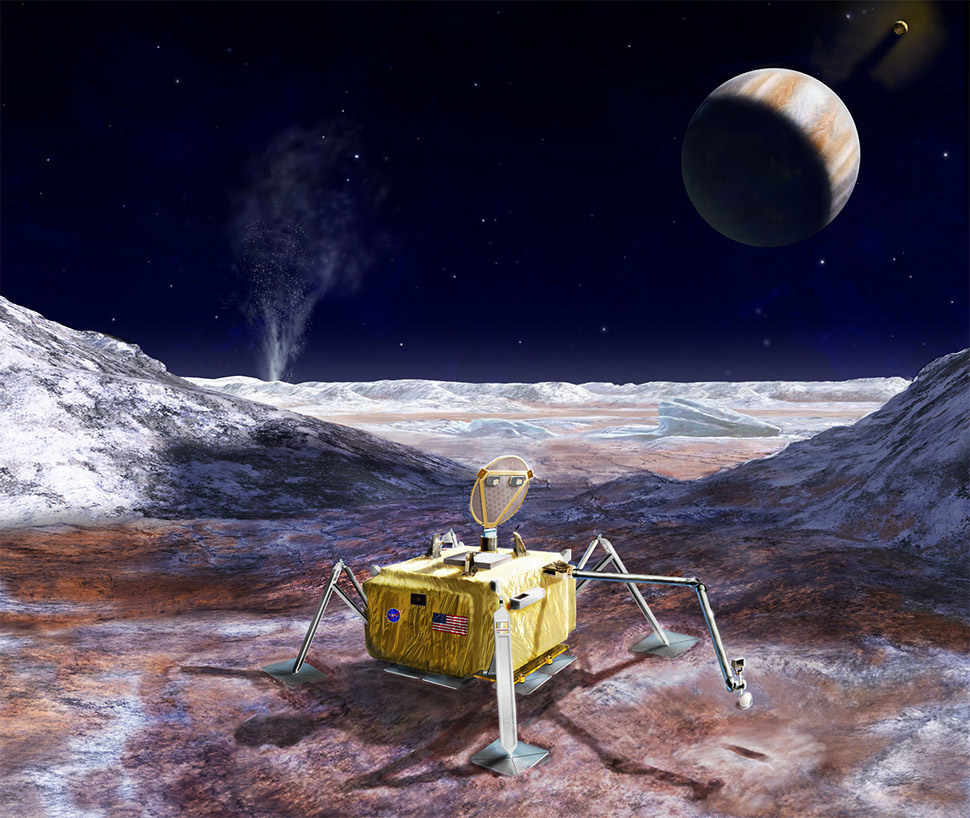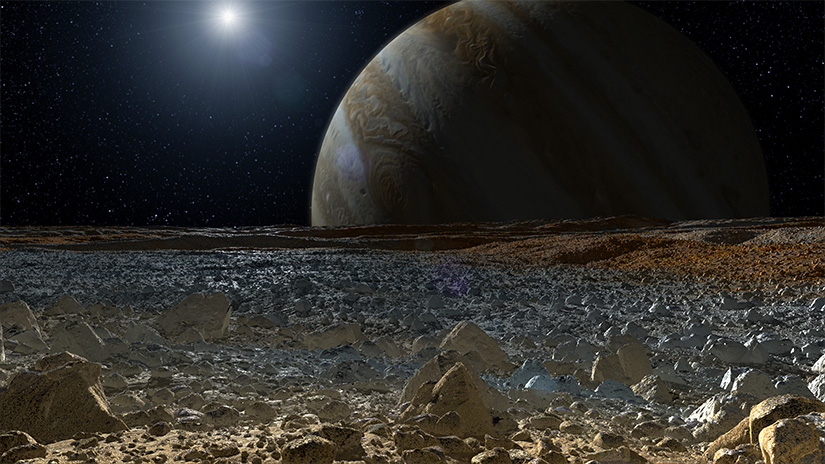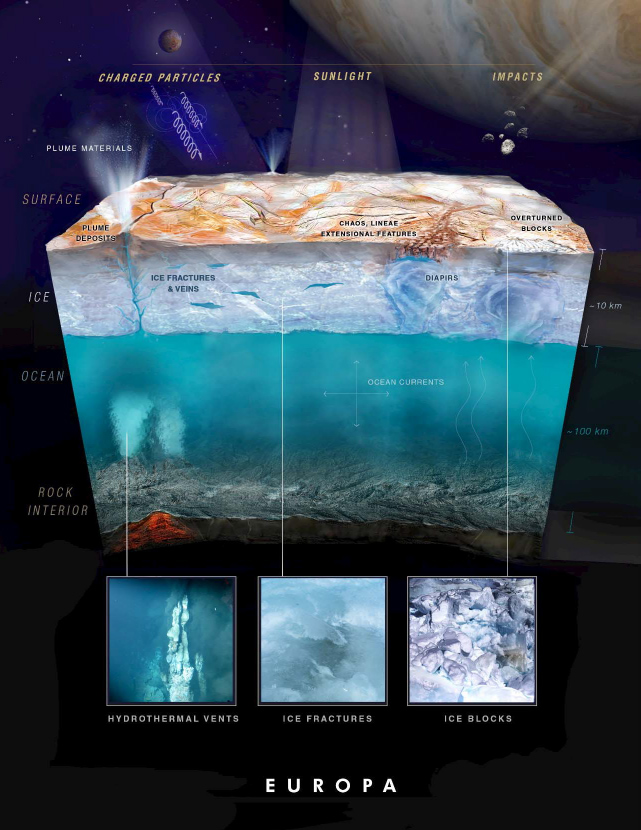
13th February 2017 NASA reveals plan for Europa surface lander in 2031 NASA has published a report outlining the mission goals of an unmanned Europa surface lander and which instruments the probe may need.
Europa is one of the four Galilean moons orbiting Jupiter, and is the sixth-largest moon in the Solar System. It has the smoothest surface of any known solid object in our Solar System. The apparent youth and smoothness of the surface have led to the hypothesis that a water ocean exists beneath it, which could conceivably harbour extraterrestrial life. In addition to telescopes, Europa has been imaged by a succession of space probe flybys, the first occurring in the early 1970s. More missions will be conducted in the future including the Jupiter Icy Moon Explorer (JUICE), a mission to Ganymede that will include two flybys of Europa. NASA's planned Europa Clipper will also be launched in the next several years. No spacecraft has ever landed, or is scheduled to land, on the surface of Europa. It has been estimated that doing so could add as much as $1 billion to a mission's total cost. However, there are signs that such an expedition may be starting to move forward, as NASA has just released a highly detailed 264-page report, outlining the potential goals and scientific instruments the agency may want to have.
If approved, this mission would be launched in 2024 aboard the next-generation Space Launch System, arriving in 2031. It would perform the first in situ search for evidence of life on another world since the Viking spacecraft on Mars in the 1970s. The lander would dig down at least 10 cm (4 inches) below the surface and obtain five or more samples, analysing the material's organic and inorganic contents. Each sample would be studied under a microscope "capable of distinguishing microbial cells as small as 0.2 microns in diameter, and as dilute as 100 cells per cubic centimeter" according to the report. In addition to its suite of instruments for analysing the samples, the lander would be equipped with a pair of colour stereo imagers, for examining the landing site in 3-D (including capabilities for characterising the surface composition), and a seismic package for determining Europa’s ice and ocean thickness via acoustic monitoring of cracking events in the ice shell. The lander's proximity to liquid water would be determined, as well as the composition of recently erupted materials from ice plumes. The mission would also look for the most promising places to explore in the future. Due to the extreme radiation of nearby Jupiter, it's unlikely that any life (as we know it) could survive for very long above ground. The spacecraft, too, would have only a short lifespan of about 20 days on the surface, before its electronics were destroyed. Those 20 days could prove to be invaluable for astrobiologists and may revolutionise our understanding of one of the most fascinating places in the Solar System.
---
Comments »
|









